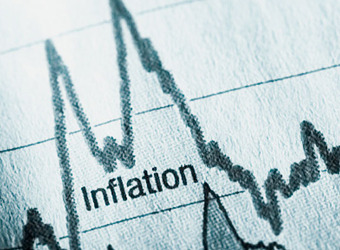The European Central Bank and other policymakers in Europe have to keep interest rates at current elevated levels until they’re sure inflation is restrained despite slow growth, the International Monetary Fund (IMF) said on Wednesday. The IMF warned them against “premature celebration” as inflation descends from its highest level.
According to the Washington-based financial institution, there could be severe consequences from underestimating the persistence of inflation, including another round of rate hikes that would rob the economy of significant growth.
The ECB, the Bank of England and other central banks that are not part of the 20-country eurozone “are reaching the peak of their interest rate cycles, while some have started to reduce policy rates,” the IMF stated in its twice-yearly regional economic outlook for Europe.
“Nonetheless, a prolonged restrictive stance is still necessary to ensure that inflation moves back to target.”
According to the IMF, historically, it takes three years on average to bring inflation back to lower levels, and some anti-inflation efforts have taken even longer.
Although the rate-hike cycle seems to have ended, a failure to complete the task and the subsequent return to rate hikes could cost the economy up to one full percentage point each year.
Alfred Kammer, director of the IMF’s Europe department, warned against “premature celebration” as he spoke to journalists in connection with the outlook. “It is less costly to be too tight than too loose” with interest-rate policy, Kammer said. The ECB, which halted its rate increases on Oct. 26 for the first time in over a year, “is in a good spot,” he said.
Inflation in the Eurozone peaked at 10.6 percent in October 2022 and steadily dropped to 2.9 percent in October.
The European Central Bank has raised its benchmark deposit rate by fully 4.5 percentage points between July 2022 and September 2023, from minus 0.5 percent to 4 percent.
Since higher rates translate into higher borrowing costs for consumer purchases, financing new officials, and financing factory equipment, central banks typically use higher rates as a tool to control inflation.
This lowers the demand for goods and lessens price pressure, but it also has the potential to harm growth, giving the ECB a tightrope act to manage.
The Bank of England left its benchmark rate unchanged at 5.25 percent at a policy meeting last week.
The IMF said Europe was headed for a “soft landing” after the impact of the rate rambles and did not foresee a recession, while growth forecasts remained uncertain and could turn out better or worse than expected.
Growth in the region, which includes the 27 member states of the European Union as well as the UK and Switzerland, was predicted to be 1.3 percent this year and 1.5 percent the following year.
The forecast for the eurozone is 1.2 percent growth in 2019 and 0.7 percent growth in 2020. Real consumer income will increase and spending and growth may improve if inflation declines more quickly than anticipated. However, slower growth might result from Russia’s war against Ukraine intensifying and the ensuing tightening of sanctions and trade disruptions.
For now, the month-long Israeli war on Palestine has led to a temporary rise in oil prices but has not interrupted the European economy, Kammer said.


